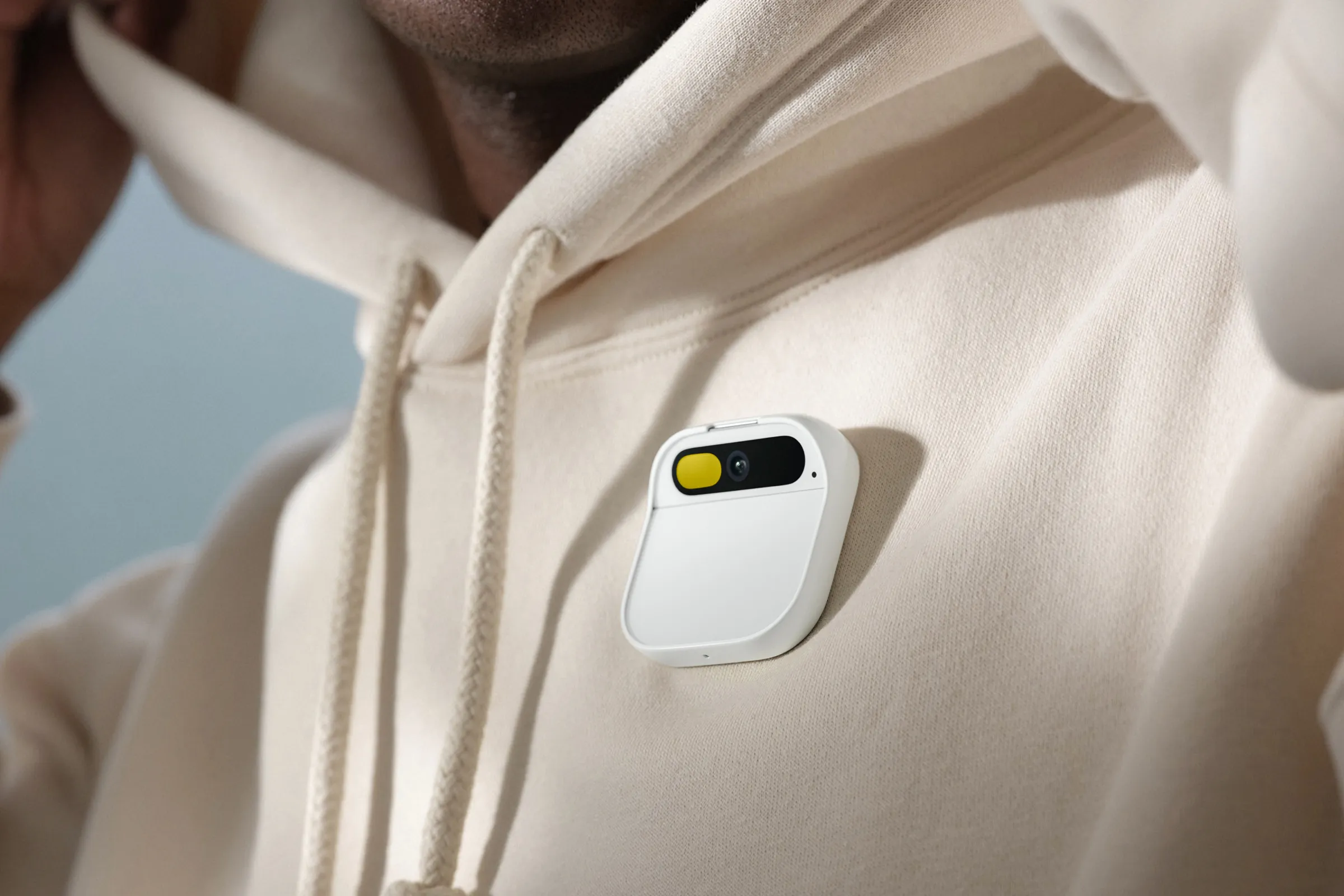Humane AI Pin: A Promising Innovation with Potential Drawbacks
The Humane AI Pin, a wearable device that harnesses AI to enable novel personal computing experiences, has garnered much attention for its innovative approach to human-computer interaction. It’s always-on voice-controlled interface, seamless smartphone integration, and privacy-focused design make it a compelling proposition. However, amidst the hype, it’s crucial to acknowledge the potential drawbacks that could hinder its widespread adoption.
A primary concern surrounding the Humane AI Pin is its reliance on voice commands. While voice control offers convenience, it may not be suitable for all environments or situations. Background noise, privacy concerns in public settings, and the potential for misinterpretation of voice commands could limit its usability in certain contexts.
Moreover, the Pin’s always-on nature, while intended for seamless interaction, raises privacy implications. The device’s constant listening capabilities, while promising for quick response times, could be perceived as an intrusion into personal privacy. Users may feel uncomfortable with the device’s ability to potentially gather sensitive information without explicit consent.
Furthermore, the Pin’s integration with smartphones, while convenient, could raise concerns about data sharing and security. The device’s access to personal data stored on smartphones could pose a risk if not adequately secured. Transparency regarding data usage and robust security measures are essential to mitigate these concerns.
Additionally, the Pin’s reliance on AI could lead to potential biases and errors. AI algorithms are trained on vast amounts of data, and if this data is not carefully curated, it could reflect societal biases, leading to unfair or discriminatory outcomes. Thorough testing and continuous monitoring are necessary to ensure that the Pin’s AI remains unbiased and reliable.
Finally, the Pin’s novelty may present a challenge in terms of user adoption. Users may be hesitant to embrace a new technology, especially one that involves wearing a device on their clothes. Familiarization campaigns and demonstrations of the Pin’s practical benefits are crucial to overcome this hurdle.
Despite these potential drawbacks, the Humane AI Pin holds immense promise for transforming human-computer interaction. Its ability to provide hands-free access to information and control over devices makes it a compelling tool for enhancing productivity and accessibility. As the technology matures and addresses the identified concerns, the Humane AI Pin has the potential to become a ubiquitous wearable device that revolutionizes the way we interact with technology.






Llipjw
cost ivermectin – candesartan without prescription buy cheap generic carbamazepine
January 1, 2025djyjhi
January 5, 2025Itnact
accutane 10mg canada – order absorica buy zyvox generic
January 16, 2025Okoxbv
buy generic amoxil – amoxil sale ipratropium 100 mcg for sale
January 17, 2025Vorncz
where can i buy azithromycin – generic tinidazole 300mg bystolic order
January 29, 2025Bcnmie
order prednisolone 10mg online cheap – buy azithromycin without a prescription order progesterone 200mg generic
February 1, 2025tlover tonet
Thanx for the effort, keep up the good work Great work, I am going to start a small Blog Engine course work using your site I hope you enjoy blogging with the popular BlogEngine.net.Thethoughts you express are really awesome. Hope you will right some more posts.
February 1, 2025Lardui
order neurontin sale – anafranil 50mg over the counter itraconazole 100 mg us
February 9, 2025Sghcaq
purchase furosemide online – buy generic furosemide for sale betamethasone 20 gm generic
February 9, 2025Ypeuqv
buy clavulanate cheap – order nizoral 200mg without prescription cymbalta 40mg over the counter
February 14, 2025Axwtxi
vibra-tabs order – vibra-tabs for sale purchase glucotrol pill
February 16, 2025tlover tonet
Dead pent subject material, regards for information. “Life is God’s novel. Let him write it.” by Isaac Bashevis Singer.
February 18, 2025Hjicej
buy clavulanate medication – augmentin 375mg canada buy generic cymbalta 20mg
February 22, 2025Mjkmcx
purchase semaglutide generic – order vardenafil 20mg generic cyproheptadine online buy
February 24, 2025Oacdnk
order tizanidine 2mg online cheap – order tizanidine 2mg generic hydrochlorothiazide 25 mg cost
February 27, 2025Rjyfoo
order cialis 10mg online – buy sildenafil online oral sildenafil 100mg
March 5, 2025Ygqavv
buy sildenafil 50mg pills – purchase viagra for sale buy cialis 20mg
March 6, 2025xmogif
March 6, 2025vorbelutr ioperbir
It?¦s actually a nice and helpful piece of information. I am glad that you simply shared this helpful info with us. Please stay us informed like this. Thanks for sharing.
March 12, 2025Ggpbde
cost lipitor 10mg – zestril 10mg brand oral lisinopril 5mg
March 14, 2025Qsuhbk
cenforce order online – chloroquine buy online metformin over the counter
March 16, 2025Ggewnb
omeprazole 10mg for sale – cheap prilosec tenormin 50mg oral
March 21, 2025tlover tonet
You really make it seem really easy together with your presentation however I in finding this matter to be actually one thing that I think I might by no means understand. It sort of feels too complicated and very vast for me. I’m having a look forward in your next put up, I’ll try to get the dangle of it!
March 24, 2025Moguym
buy generic medrol for sale – medrol where to buy cost triamcinolone 10mg
March 26, 2025Bysdnl
buy desloratadine pills for sale – oral priligy oral priligy
March 28, 2025Iihtse
buy cytotec 200mcg online cheap – order cytotec pills diltiazem 180mg cheap
March 30, 2025droversointeru
Hi there just wanted to give you a quick heads up. The text in your post seem to be running off the screen in Safari. I’m not sure if this is a format issue or something to do with browser compatibility but I thought I’d post to let you know. The layout look great though! Hope you get the problem resolved soon. Kudos
April 4, 2025Qgbxpg
zovirax 400mg price – buy generic zyloprim over the counter buy rosuvastatin 20mg generic
April 5, 2025Ugwtqx
domperidone 10mg drug – buy domperidone pills for sale order flexeril without prescription
April 7, 2025Cnkqiz
domperidone medication – purchase motilium buy flexeril without a prescription
April 15, 2025Gutzds
inderal 10mg drug – methotrexate 10mg sale methotrexate 10mg generic
April 16, 2025Wvpugp
coumadin 2mg price – buy coumadin medication buy hyzaar pill
April 19, 2025Ejqfgs
order levaquin for sale – levofloxacin 500mg over the counter buy ranitidine no prescription
April 23, 2025Dlphqw
purchase esomeprazole generic – brand imitrex 50mg order imitrex pill
April 23, 2025Osudef
mobic cost – cost tamsulosin 0.2mg purchase tamsulosin pills
April 29, 2025Kqjbqa
order ondansetron without prescription – buy aldactone tablets buy generic zocor
May 16, 2025Qnrpal
valacyclovir 1000mg drug – order propecia 1mg pills diflucan 200mg sale
May 17, 2025htqrv
order provigil 200mg pills order provigil online cheap purchase provigil without prescription provigil 200mg us where to buy modafinil without a prescription buy modafinil 100mg generic buy provigil generic
June 1, 2025vsk9a
how to get cheap clomiphene without prescription get clomid without a prescription can you get cheap clomid without insurance how can i get generic clomid price clomid medication for women can i order cheap clomid prices can i buy generic clomiphene
June 3, 2025